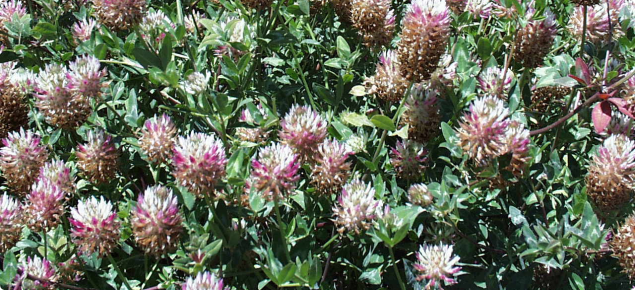Species description
Young plants of arrowleaf clover are similar in appearance to many other clovers. But leaves of mature plants are distinctively diamond or arrowhead shaped. Leaves have distinctive white or green V-shaped marks and sometimes indistinct red marks.
Mature plants can reach a height of over 1m when growing in swards. Flowering heads are large (up to 6cm long and 2cm in diameter) and consist of many individual flowers. Petals change in colour from white to pink and later to bronze. The bronze petals persist in the fruiting heads which elongate to 10cm. The calyx becomes inflated when in fruit which is also typical of Persian and bladder clovers. Seed heads remain intact on the stem, however, seed often sheds soon after maturity. Seeds are brown, yellow or green in colour, and weigh about 1.2mg (slightly larger than Balansa and Persian clovers but much smaller than subterranean clover).

Origin and description of Cefalu
Arrowleaf clover occurs naturally in Italy, Greece, Corsica, western Turkey, the Balkans and north of the Black Sea. Cefalu was selected by Richard Snowball, Curator of the Australian Trifolium Genetic Resource Centre. It originated from an early flowering plant within a population of the cultivar Seelu. This early flowering plant underwent further selections for early flowering and prostrate growth habit. While individual plants are relatively prostrate, they are strongly upright in dense swards.
Cefalu was released in Australia in 1999 by the Centre for Legumes in Mediterranean Agriculture (CLIMA), University of Western Australia. Cefalu appears similar to other arrowleaf clover cultivars. The white V-shaped leaf marks are more common (85% of plants) than with Seelu (68%), Zulu II (68%) and Arrotas (30%). The most marked difference is the time to first flowering. Cefalu commences flowering about 135 days from sowing in Perth, about two weeks earlier than Seelu or Zulu II and six weeks earlier than Arrotas.

